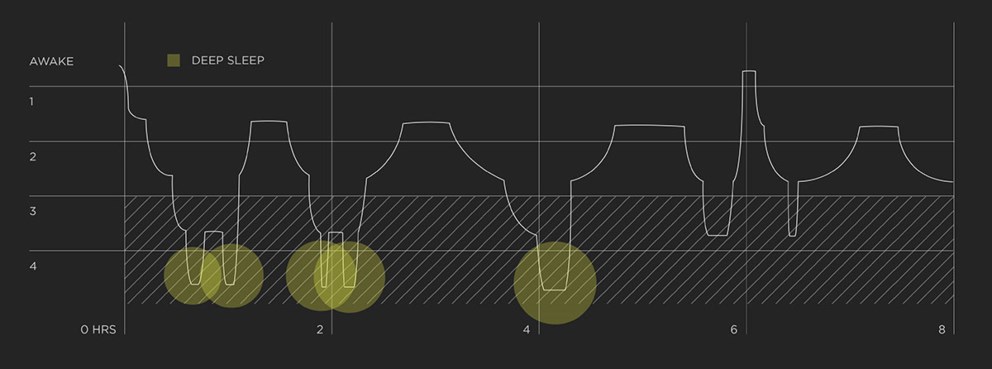
The Activity Called Sleep
Most people treasure sleep as a time of blessed inactivity. But research shows that sleep is very active state. We reposition our bodies throughout the night — which is both normal and helpful for maintaining good circulation. Our bodies release important hormones during sleep. Our immune systems reboot. And the brain engages in a variety of critical housekeeping functions.
The Two Sleep States
Not to be confused with “stages,” of sleep, the two “states” are: REM, which stands for Rapid Eye Movement; and NREM, or non-Rapid Eye Movement.

NREM
As we begin to fall asleep, we enter NREM sleep. NREM-sleep is composed of all four stages of sleep. However, REM-sleep occurs periodically throughout the cycle.
REM
First occurs about 90 minutes after falling asleep and recurs about every 90 minutes, getting longer later in the night.
- Provides energy to brain and body
- Supports daytime performance
- Brain is active and dreams occur
- Eyes dart back and forth
- Body becomes immobile as muscles are turned off
REM a Little Dream for Me
REM gets its name from the darting eye movements that occur during this sleep stage. It’s also characterized by a sudden and dramatic loss of muscle tone. In fact, the skeletal muscles of a person during REM sleep are effectively paralyzed. This stage is marked by a level of brain wave activity similar to a waking state, and is the sleep stage when dreaming occurs. REM-sleep was first document by researchers in 1953. Since dreams were an important subject in the study of psychology, this discovery was considered groundbreaking. This excerpt is from their report:
The vivid recall that could be elicited in the middle of the night when a subject was awakened while his eyes were moving rapidly was nothing short of miraculous. It [seemed to open] … an exciting new world to the subjects whose only previous dream memories had been the vague morning-after recall. Now, instead of perhaps some fleeting glimpse into the dream world each night, the subjects could be tuned into the middle of as many as ten or twelve dreams every night.
(Dement, 1978, p. 37; quoted in Pinel, 1993)
While You Were Sleeping
During the deep stages of NREM sleep (Stages 3 and 4), the body repairs and regenerates tissues, builds bone and muscle, and appears to strengthen the immune system. As you get older, you sleep more lightly and get less deep sleep. Aging is also associated with shorter time spans of sleep, although studies show the amount of sleep needed doesn’t appear to diminish with age. If sleep is cut short, the body doesn’t have time to complete all of the phases needed for muscle repair, memory consolidation and release of hormones regulating growth and appetite. Then we wake up less prepared to concentrate, make decisions, or engage fully in school, work and social activities.










